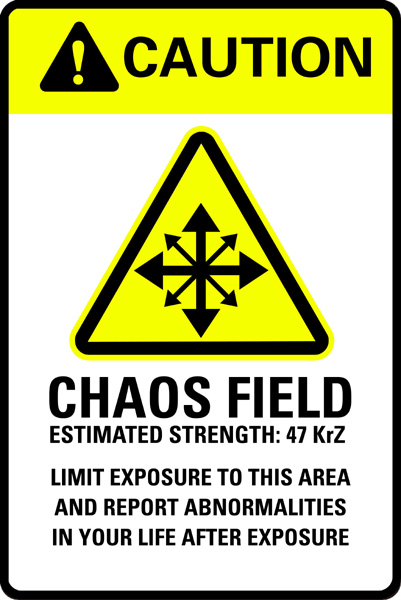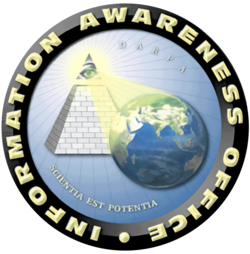I'm mindful of the problem because (cancer concerns aside) I'm sensitive to a wide range of chemicals -- including those found in some types of cloth. A few years ago I bought a beautiful set of sheets from a fancy store. The label said they were100 percent cotton, but after sleeping in them a few nights I was in bone and muscle pain from head to toe. Repeated washings didn't get out whatever the offending substance was.
I got a terrible reaction from the dyes or maybe the chemicals used to make those all-cotton sheets "no-iron". You can only imagine what true synthetic cloth can do to us. It's largely a product of the oil industry.
The Toxins Lurking in Your Clothing...
We have the illusion that clothes made from synthetic fibers are safe, but the materials are in fact full of invisible chemicals the clothing industry prefers we don't think about.
A hundred years ago, clothing was made of natural fibers like cotton, flax, wool, and silk. In the early 1900s synthetics were developed.
Although rayon was introduced in 1924, the first truly synthetic fiber was nylon, made by DuPont from the petro-molecule toluene. Nylon because a popular material for women's panty hose.
Other synthetics followed:
- Acrylic (1950), aka, "wash-and-wear" fabrics — a "revolutionary time-saving leap" for homemakers.
- Polyester (1953), "wrinkle free" fabrics developed from xylene and ethylene.
- Spandex and olefin (1959), which became the mainstay of sportswear, swim suits, and thermal underwear. Olefin is produced by "cracking" petroleum molecules into propylene and ethylene gases.
Today's clothing (a $7 trillion/year industry) is manufactured using an astounding 8,000 synthetic chemicals.
Nowadays, clothes also contain toxins like formaldehyde, brominated flame retardants, and perfluorinated chemicals (Teflon) to provide "non-iron" and "non-wrinkle" qualities. Insecticides are even applied in the name of good health!
For half a century, skin and chemicals have been interacting… creating problems like infertility, respiratory diseases, contact dermatitis, and cancer.
The more synthetic clothing you wear, the greater your risk of absorbing toxic chemicals that harm your health.
The Problems with Synthetics…
When toxins are absorbed through your skin — your largest organ — they bypass your liver, the organ responsible for removing toxins.
You also may not realize that your skin keeps you healthy by venting toxins… up to a pound per day.
Petrochemical fibers restrict and suffocate your skin — shutting down toxic release. Meanwhile, they contribute to your total toxic burden and may become the "tipping point" for triggering the onset of disease.
Two contributing factors are (1) toxic buildup in your body and (2) multiple chemicals that interact together to create even worse problems than the individual chemicals by themselves.
Skin rashes, nausea, fatigue, burning, itching, headaches, and difficulty breathing are all associated with chemical sensitivity. If you have mysterious health symptoms that you can't seem to get control over, it's worth checking out whether your clothes could be the problem.
The Chemicals You Wear Every Day…
With a "mere" 8,000 chemicals used in clothing manufacture, it's a sure bet you're wearing many as you read this. Let's highlight some of the worst.
These kinds of fabric finishes "scream" chemicals...
- Easy Care — Wrinkle free, shrinkage free garments release formaldehyde.
- Water Repellent — Fluoropolymers (as in Teflon) are used to repel oil and water
- Flame Retardants
- Bacterial and fungicidal chemicals — Triclosan and nano-particles are used for this.
Formaldehyde is linked to a 30% increase in lung cancer, plus skin/lung irritation and contact dermatitis. It is found in fabrics claiming to be:
- Anti-cling, anti-static, anti-shrink
- Waterproof
- Perspiration-proof
- Moth-proof and mildew resistant
- Chorine resistant
It's also used in dyes and printing to fix the design and prevent "running".
Most governments restrict formaldehyde levels in clothing… but not the U.S. One of the worst offenders is China. Beware of "Made in China" labels.
Use of formaldehyde in clothing is extremely widespread. There have even been lawsuits alleging high levels of it in Victoria's Secret bras.
High temps and humidity make "poison clothes" even worse — they open your pores and increase chemical absorption.
And you absorb formaldehyde from multiple sources daily, so don't be fooled by manufacturers' reassurances.
Disperse Blue Dyes may look gorgeous — even regal — but they put you at high risk for contact dermatitis… especially dark blue, brown, and black synthetic clothing. It's important to note — laundering does not reverse that risk.
Worse… Disperse Blue 1 is classified as a human carcinogen due to high malignant tumor levels in lab animals.
Incidentally, you might be interested to know that this dye also shows up in cosmetics and semi-permanent hair dyes.
Fire and burn hazards: The Marine Corps now prohibits troops in Iraq from wearing synthetic clothing while off base… after too many unfortunate burns from soldiers wearing polyester, acrylic, and nylon — which readily melts in high heat and fuses to the skin. (Dudes, what did you expect? The stuff is a first cousin to plastic. Both are products of the oil industry.)
Of course, that begs the question of whether flame retardants are safer…
Flame Retardant use began in 1971, when government required children's sleepwear to be self-extinguishing. The solution was to add brominated Tris.
Studies measuring urine samples showed that this chemical is readily absorbed.
Brominated Tris is a mutagen, and causes cancer and sterility in animals. (Mutagens cause inheritable mutations by damaging DNA.) They also cause testicular atrophy and sterility.
Tris was banned in children's clothing in 1977 (but lives on in upholstered furniture foam, baby carriers, and bassinets). Today most synthetic fabrics contain a new generation of flame retardants bonded into the fabric, which must survive 50+ washings.
According to the U.S. Consumer Product Safety Commission's National Burn Center, only 36 children a year suffer serious injuries from sleepwear catching fire. My heart goes out to these tragic victims and their families. But is the toxic contamination of millions of children worth protecting 36 children per year from burns?
This sort of regulation is a product of the "precautionary principle" — the notion that there should be no limit to the amount of money spent or the amount of inconvenience inflicted on millions of people when it comes to preventing rare dangers that affect a tiny number of people. The mania for making our society risk-proof and accident-proof actually increases danger in many cases.
The Consumer Product Safety Commission exempts certain sleepwear from flammability standards. Two companies selling kids' sleepwear without flame retardants are L.L. Bean and Lands' End.
But it's not just children's sleepwear…
Demand is high for fire-retardant uniforms and civilian clothing.
Lab studies show that flame retardants (PBDEs) can cause a slew of health issues — thyroid problems, brain damage, ADHD symptoms, and fertility problems.
The insecticide permethrin is now in civilian outdoor wear and military uniforms even though no long-term studies have assessed its safety. We wrote about this dangerous chemical in Issue #89. You can see it at www.cancerdefeatedpublications.com/newsletters.
Silver nanoparticles in name-brand clothing create anti-odor, anti-wrinkle, and anti-stain clothes.
"Nano" means "really tiny"… super-microscopic.
Nano-particles in clothing can create easily absorbed toxins that, due to their miniscule size, are transported into all your organs, including your brain… consequences unknown.
Other scary toxins include sulfuric acid, urea resin, sulfonamides, halogens, and sodium hydroxide.
The Health Hazards of Built-Up Electrical Charges…
Electrostatic charges accumulate in synthetic clothing. There are stories of shocking mini-explosions from mixing layers of synthetic clothing with synthetic carpeting.
And get this: synthetic undergarments contribute to infertility in men.
A 24-month study of male dogs wearing either loose-fitting polyester underpants or loose-fitting cotton ones showed that wearing polyester created significant decreases in sperm count and degeneration of the testes. The animals wearing cotton suffered no side effects. (And, please, no letters to the editor about dogs wearing underwear. I agree, it sounds silly.)
Scientists think polyester traps body heat, encourages chemical absorption, and creates electrostatic build-up… which all affect sperm count.
Is Tight Fitting Clothing a Problem?
The short answer is "yes".
We recently ran an article on the risks of wearing bras, especially tight ones (Issue #65).
Probably the most unsafe clothing item ever introduced in the name of fashion was the corset. It squeezed women's bodies and crushed their internal organs to the point of broken ribs.
Today, some scientists believe restrictive bras suppress the lymphatic system — which flushes toxins from your breasts and lymph nodes and helps prevent breast cancer.
Anna Maria Clement and Brian R. Clement, co-authors of the book Killer Clothes, recommend limiting bra usage as much as possible.
Your shoes might also fit the category of tight clothing. A 2009 survey of 2,000 people found that 40% of women buy and wear uncomfortable shoes to make a fashion statement. By contrast, just 17% of men did likewise.
Synthetics Hurt Athletic Outcomes…
Despite the wide appeal of synthetic athletic apparel, medical studies show that synthetic fibers cause muscle fatigue — which can mean the difference between winning and losing for competitive athletes.
In a study of 24— to 27-year-old men, natural linen long sleeved shirts were worn for five hours -- and then polyester ones were worn for another five hours. Their arms were monitored during both, with electrodes measuring skin temperature and velocity of the men's muscle tissue.1
No changes were measured when they wore the linen. But when they donned polyester they endured a range of muscle disruptions…
The Bottom Line…
It's important to realize that while individual chemicals might not endanger your health, the synergistic effect of multiple chemicals interacting can have unpredictable negative effects.
Natural and organic clothing is becoming more popular again. But it can still be a challenge to find it, and you may have to piece together items from multiple suppliers. Here's empowerment for the process…
Priority #1 — Choose natural fibers.
- Cotton — preferably organic. It still remains the "king" of textiles. Organic accounts for less than 1% of worldwide production.
- Flax — one of nature's strongest fibers.
- Hemp — grows without any need for fungicides, herbicides, or pesticides because it's naturally insect-resistant. Its fibers are reported to be four times stronger than cotton. This is NOT the hemp known for its mind-altering properties!
- Silk — known as the "queen of fabrics". Watch out for the use of synthetic dyes in silk.
- Wool — most of today's wool is contaminated with chemicals, i.e., pesticides used to kill parasites. But organic wool is becoming more common.
- Other — alpaca, angora, camel, cashmere, mohair, ramie, aluyot.
Incidentally, the Organic Trade Association estimates that one non-organic cotton T-shirt uses one-third pound of pesticides and fertilizers. Cotton production uses one-fourth of all the world's fertilizers.2 It's another good reason to choose organic cotton to add to the ones above.
Here are some sources to get you started in your search for healthier clothes.
- Hempest.com
- Patagonia (small line of organic clothing)
- Ecowise.com
- Fairindigo.com
- Faeriesdance.com
- Kasperorganics.com
- Juteandjackfruit.com
Start small… Choose organic for clothing closest to your skin most of the time — underwear, sleepwear, camisoles, and the like… and then build as you replace items in your closet. Move in a healthier direction with your clothing to drastically reduce your chemical load.
Kindest regards,

Lee Euler,
Publisher
 Imprimir tudo
Imprimir tudo Responder
Responder
![[Image] Cancer Defeated logo](http://cancerdefeatedpublications.com/newsletters/images/CDNewsletter_Masthead_noNav.jpg)







